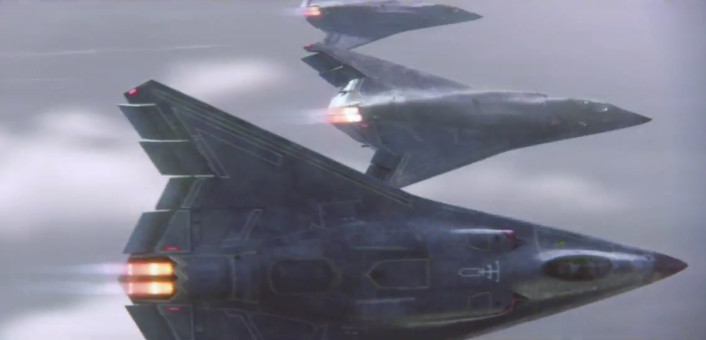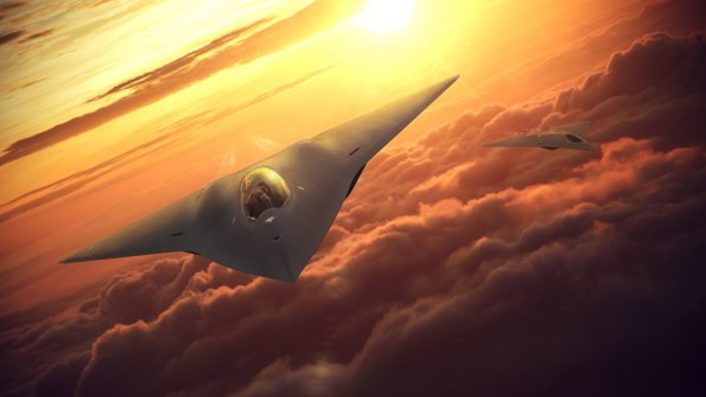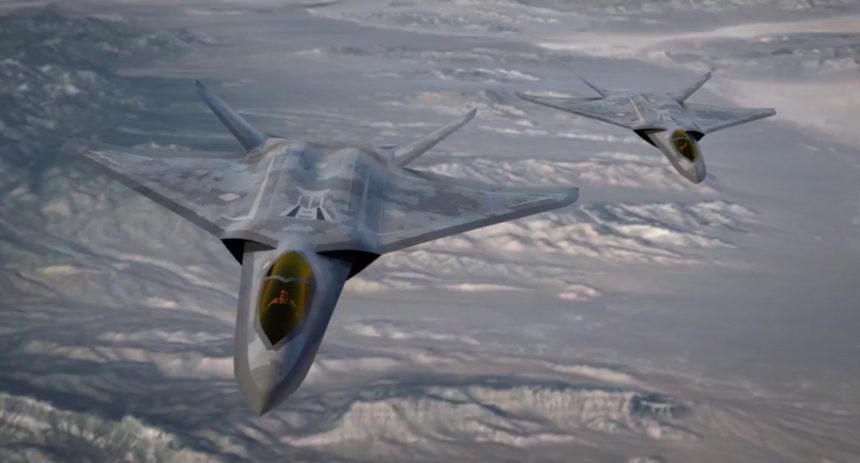A new video provides a glimpse of the 6th Gen. fighter concept that could replace the F-22. But it’s probably not the real one…
A short clip just released by the Lockheed Martin’s Skunk Works (H/T to Flightglobal’s Editor Stephen Trimble for the heads-up) teases the shape of the concept-fighter it is developing to compete for the U.S. Air Force Next Generation Air Dominance (NGAD), the program will ultimately lead to an air superiority 6th Gen. jet that could replace the F-22 Raptor.
The Next Generation Air Dominance concept points towards a small and much agile manned plane, rumored to be supersonic, long-range, cyber-resilient against threats of the future interconnected world, with morphing metals, self-healing capabilities and ability to carry laser-weapons.
The shape seems to be the very same that Lockheed Martin published in a 2012 calendar distributed to journalists: with an F-22-like nose, flat canted tails and contoured wing, the aircraft strongly reminds the Northrop/McDonnell Douglas YF-23, a single-seat, twin-engine stealth fighter aircraft technology demonstrator designed for the United States Air Force’s Advanced Tactical Fighter (ATF) competition.
Two YF-23 prototypes were built with the nicknames “Black Widow II” and “Gray Ghost” between 19 but the contract was eventually won by Lockheed with the YF-22 Lightning and the YF-23 program was canceled.
Interestingly, the conceptual sixth-generation fighter being developed by Northrop Grumman today does not seem to be inspired to the YF-23 at all: based on some renderings exposed so far, the aerospace giant is working on a new tailless concept that features the “cranked kite” design that’s in vogue with Northrop Grumman (that built the U.S. Air Force iconic B-2 stealth bombers the X-47B naval killer-drone demonstrator and the still much secret RQ-180 unmanned aerial vehicle surveillance aircraft.)

The proposed timetables see a sixth-generation fighter being completed some time in the 2030s.
Actually, as reported by Aviation Week’s Guy Norris earlier this summer, Lockheed Martin has recently revealed a radically revised version of the concept so the one included in the above Skunk Works 75th anniversary video is probably only the original concept.

Russia is also working on 6th gen. aircraft.
Sukhoi design bureau prepared the first blueprints for Russia’s sixth-generation fighter jets TASS news agency reported last year.
“I’m referring also to new design concepts briefly presented by the Sukhoi design bureau and by the general designer appointed for all aircraft systems and armaments [..] They have really come up with the designs for the creation of the sixth-generation fighter” Moscow’s Deputy Prime Minister Dmitry Rogozin said in a meeting with the journalists.
So, although the T-50 PAK-FA, its first 5th Gen. stealth fighter, is still being developed, Moscow has started working on its replacements, even though no further detail about the technologies that the new aircraft types will embed has been unveiled.
There are reasons to believe the Russian sixth-generation concept is going to be somehow different from the U.S. Air Force’s F-X Next Generation Air Dominance: Sukhoi might base its 6th Gen. on the PAK-FA and upgrade the design throughout the years similarly to what they have done with the Su-27 and subsequent Flanker variants up to the Su-35S.
This means that the PAK-FA will probably become a 5++ Gen. thanks to the planned upgrades and be the base for Russia’s 6th Gen. fighter.
Among the most interesting upgrades in the PAK-FA (now Su-57) roadmap there’s a future radar based on photonics that was announced by the Russian state-owned Radio-Electronic Technologies (KRET) in December 2015 and a full-scale working model is expected by the end of 2018.
The ultra-wideband active radio-optical phased array technology (known by its Russian acronym ROFAR) radar will be half the weight of a current conventional radar and allow to virtually get a “3D TV picture on a range up to 400 km.”
Considered the operational range of the radar, the ROFAR will be virtually impossible to jam, at least on paper.
However, such optimistic claims will have to be backed by facts: unlike the U.S., that have been operating 5th Gen. aircraft (the F-22 and, more or less, the F-35) and active electronically scanned array (AESA) radars for years, so far, Russia has not been able to operate a next generation stealth aircraft nor AESA radar system (both ones are still at the testing stage).









